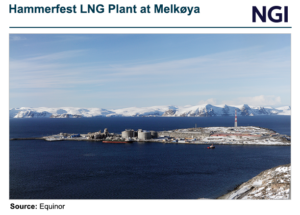LNG | LNG Insight | NGI All News Access | NGI The Weekly Gas Market Report
Optimism Waning for Steady LNG Demand Recovery, Poten Says
The chances for a sustained recovery in global natural gas demand are being threatened by economies that have been slow to start back up as countries inch out of lockdown and face a resurgence of Covid-19 cases in some parts of the world, according to shipbroker Poten & Partners.

Industrial demand remains weak in key markets, particularly those in Asia where some of the world’s leading liquefied natural gas (LNG) importers are located, while early demand recovery has been more “unpredictable and volatile” elsewhere, said Jason Feer, global head of business intelligence, during a webinar on Wednesday.
LNG demand in South Korea, Japan and Latin America has been particularly hard hit, he noted. While the World Health Organization on Sunday reported the highest daily infection increase yet, with the largest spikes in North and South America, South Korea and Japan have better managed the outbreak. But Feer said the global economic slowdown has hurt baseload importers in Asia.
Meanwhile, Chinese demand has rebounded sharply in recent months as lockdown measures largely eased there and pent-up consumer demand drove gains, but those appear to be falling off, Poten said. In India, where some of the most stringent lockdown measures have been imposed, gas demand increased on strong spot buying for fertilizers, but it’s unclear if such patterns would continue.
“It’s something to watch out for, is that something that can be sustained,” Feer said of India, “or are we just sort of meeting initial pent-up demand when economies open up?”
Demand weakness is perhaps more noticeable than it was a few months ago. Floating LNG storage levels are approaching record highs, as the number of laden vessels worldwide hovers near 30. Feer said the volume of LNG currently floating represents about 58% of the typical demand in June. He added that the highest Poten has ever recorded was roughly 61% of monthly demand, saying that the current elevated inventories are a bearish signal for winter.
LNG producers in the United States and across the world are responding to the oversupply and low prices. U.S. cargo cancellations are expected to continue through September, Feer said, with more than 40 likely in August in addition to 33 this month and 25 expected to be cancelled in July.
Australia is also reducing output as its long-term contracts allow and on the spot market, he added, while Indonesia, Malaysia and Nigeria are cutting back their volumes too.
“The odd man out is Qatar,” Feer said. The world’s largest LNG producer is using floating storage regularly in the Asia Pacific, Atlantic Basin and Middle East regions and has been aggressive in the global spot market to retain its market share.
The country also appears more inclined to sell cheap natural gas these days.
“Traditionally, Qatar has resisted selling very, very cheaply,” Feer said. “They have really dropped that objection.”
Qatar has very low production costs and is able to sell gas at lower prices. As U.S. cargoes have been canceled, the country has also stepped in with spot volumes to serve offtakers that have elected not to lift LNG in North America.
While the supply and demand balance in Europe has improved somewhat in recent weeks, the outlook is still cloudy there as well.
Leading gas benchmarks on the continent hit record lows and were trading around $1.00/MMBtu last month. But that opened the arbitrage window to Asia and supply was diverted there. Europe has also accounted for more than 50% of U.S. export cargoes this year, and as American cancellations have mounted, less LNG imports have arrived in Europe.
European gas prices have made a comeback since then, while the overall reduction in LNG imports has helped to slow the pace of injections into gas storage sites. “This is giving the market some additional relief that we won’t hit capacity of storage before the end of injection season,” said Poten analyst Oleg Vukmanovic.
European storage is currently filled to 78% of capacity, but the supply and demand balance now has the continent on track to fill storage by the end of September, or closer to the winter heating season. It was previously on track to fill by August, Vukmanovic said.
“That’s a positive for prices, and it reduces the risk of a collapse” in the Dutch Title Transfer Facility into negative territory.
Poten expects LNG demand to decline by 5-6 million tons (Mt) this year and growth to return to a level of roughly 376 Mt in 2021, up by about 9-10 Mt year/year. Similar growth levels are expected in 2022, driven primarily by markets in Asia.
© 2024 Natural Gas Intelligence. All rights reserved.
ISSN © 1532-1231 | ISSN © 2577-9877 | ISSN © 1532-1266 |


